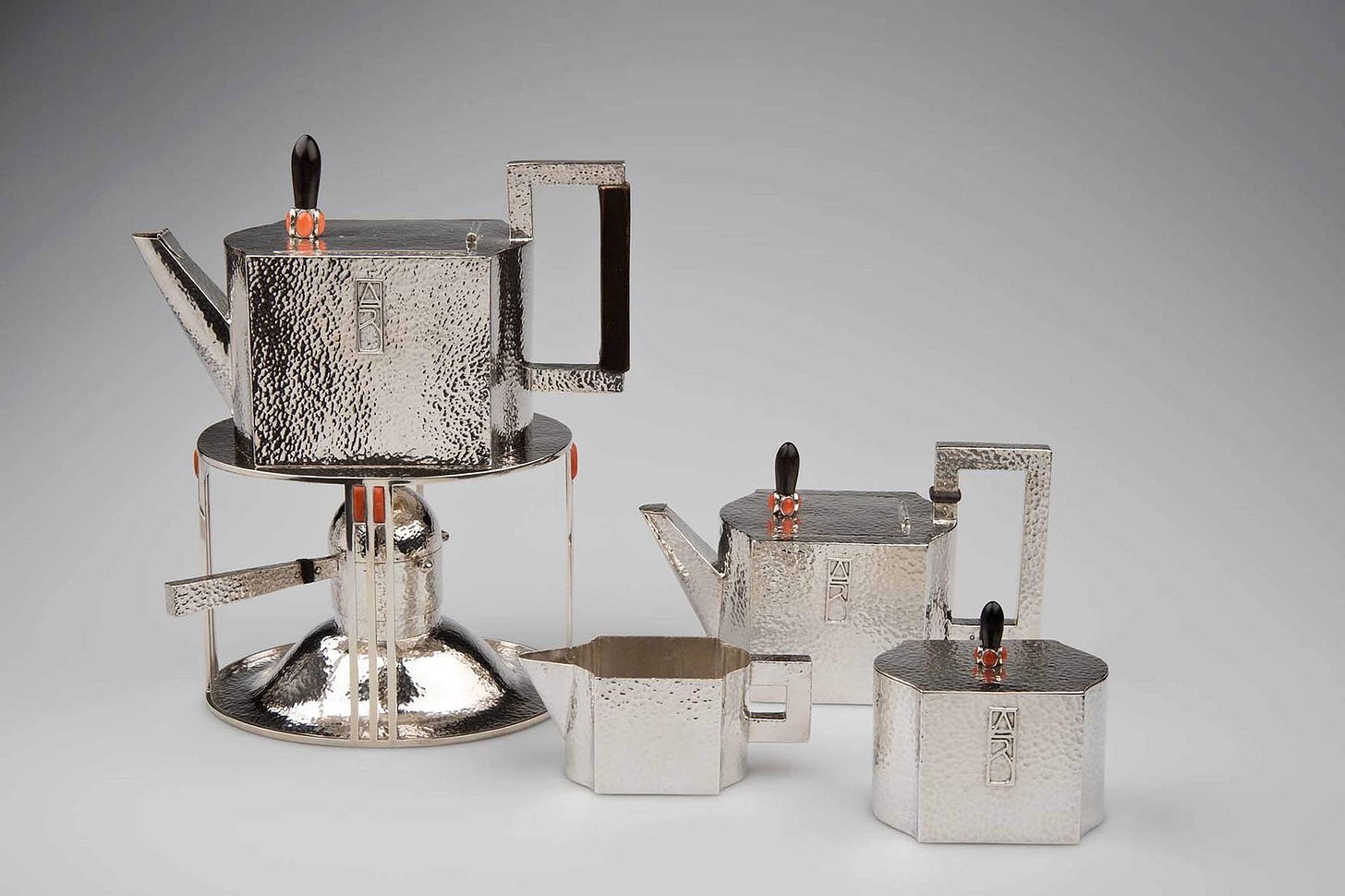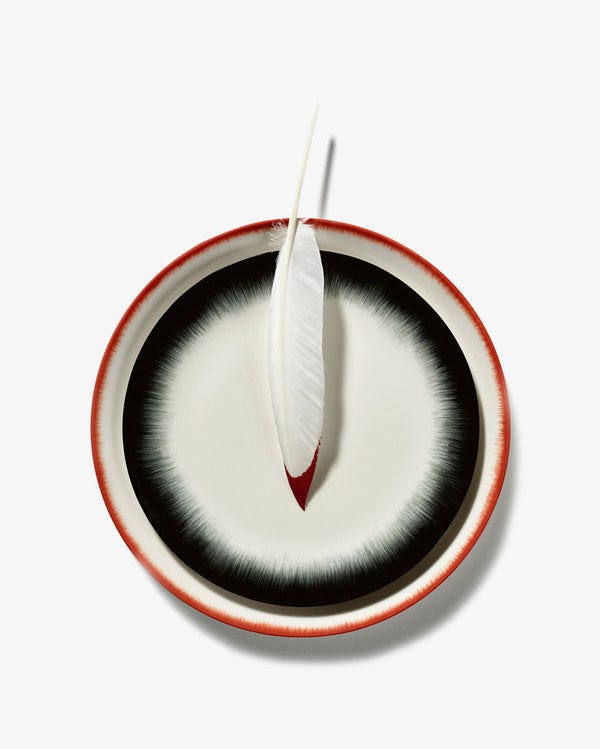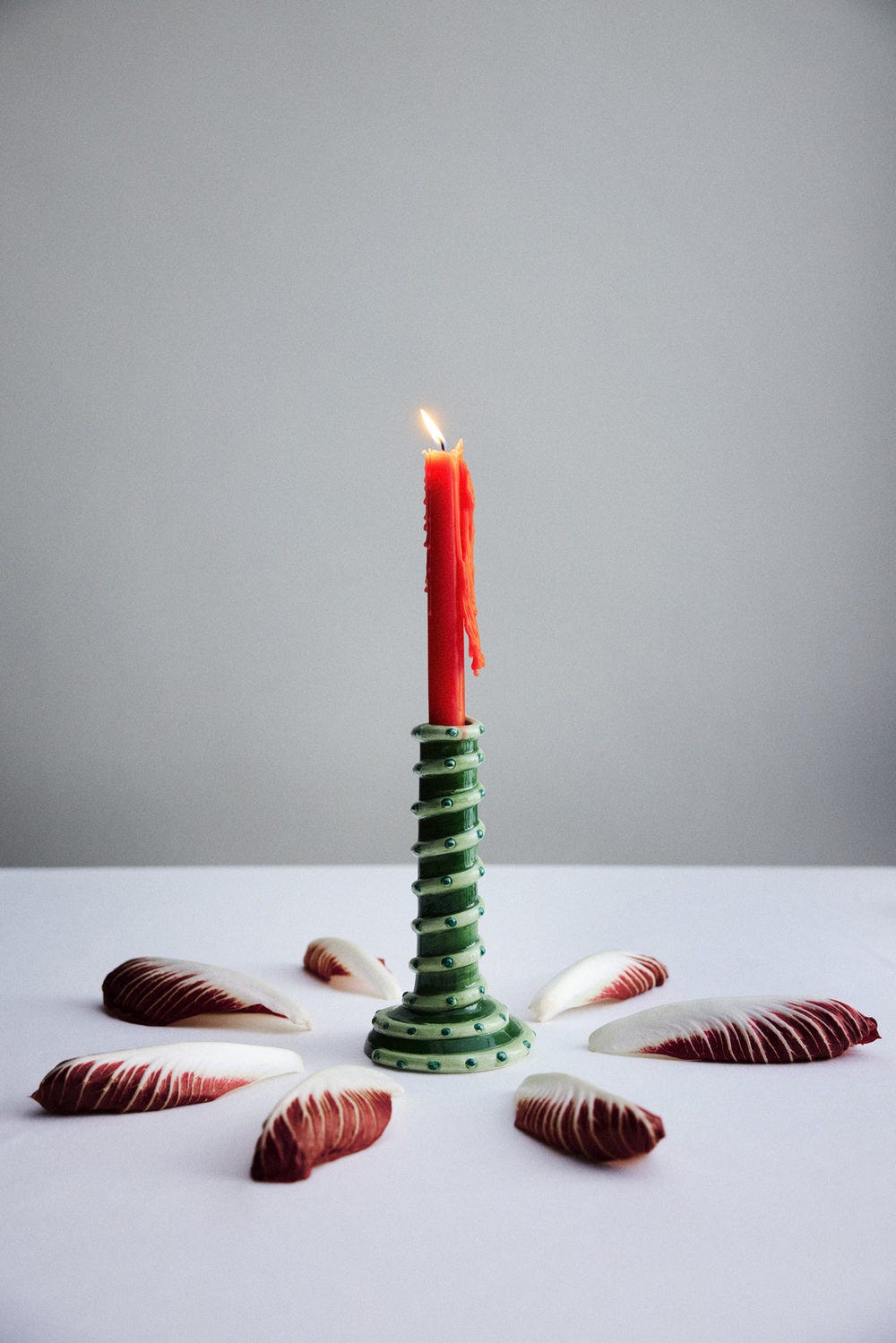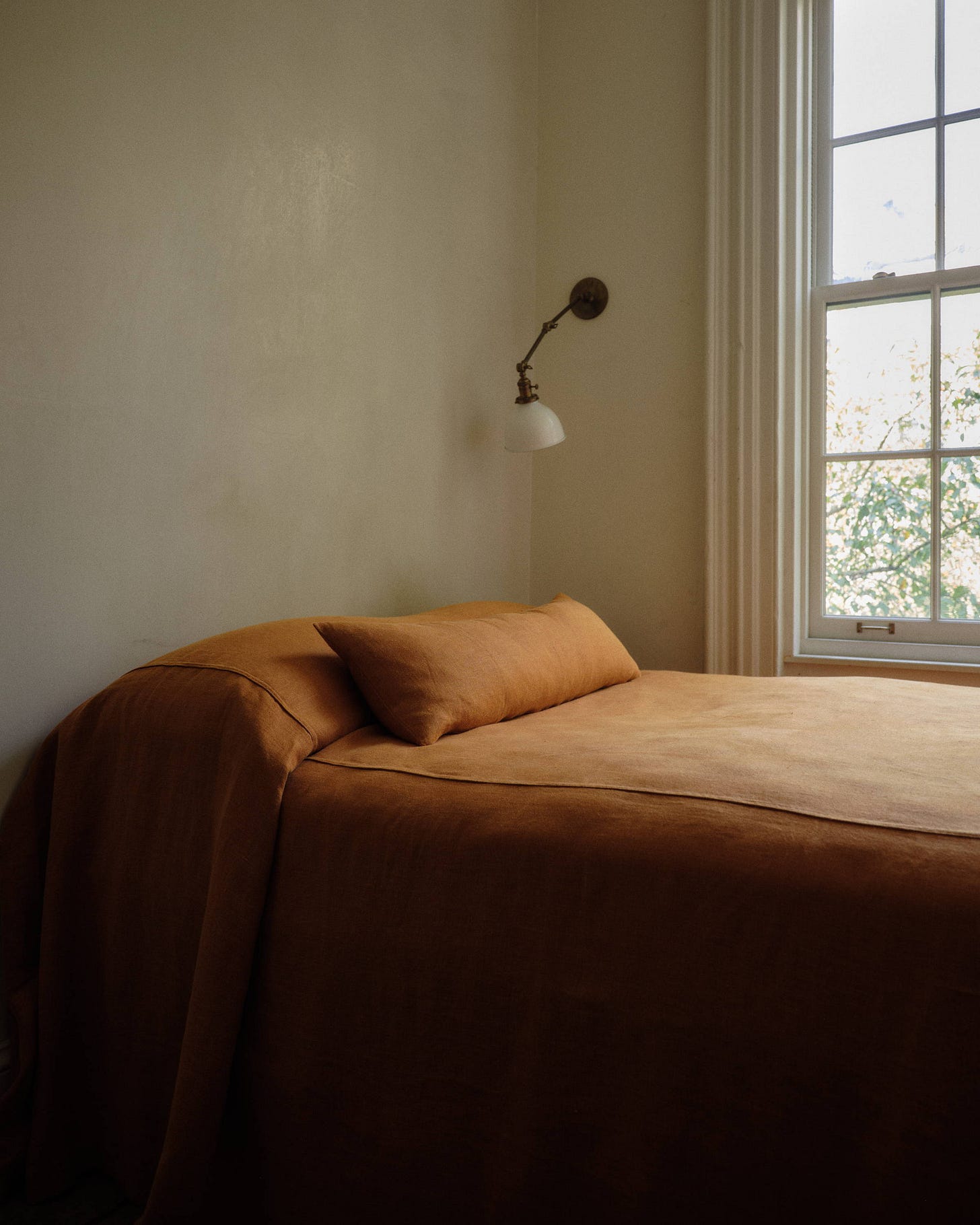Khaite x Ginori and the Future of Homeware Collections
Why high fashion and luxury interiors collaborations make sense
Khaite, the NYC-based luxury fashion label, released an 8-piece homeware collection this summer with Ginori 1735, a Florentine tableware design house. The collection is available in-store at the Mercer Street flagship, East Hampton, and already sold out online at Moda Operandi.
This collaboration spurred me to explore the irrefutable chemistry that fashion and interiors has together. With the rise in popularity of quiet luxury brands, interiors are increasingly becoming a part of their design story landscape. But first, let’s dive into Khaite’s homeware:
The collection features a custom print from their 2024 Resort collection, reminiscent of Picasso’s cubism on the surface and Vilhelm Lundstrom’s nudes of the early 1900s at closer inspection. Elliptical shapes seen in both the vase and bathing-nude sculpture echo the curved steel partitions in their Brutalist-inspired flagship on Mercer Street—not to mention a callback to art-deco forms.
Note the Danish design inspiration in this collection as the saturated, blue and white glaze pays homage to the classic Royal Copenhagen porcelain designs. A personal favorite of the entire collection is the soft curve in the soup bowl that brings to mind the bronze bowls of the decorative Danish sculptor, Just Andersen.
Khaite’s new foray into homewares isn’t unique. Many major fashion houses have their own collections: from the well-known Hermés blanket to Dior crystal water glasses. Beyond the obvious opportunity for a revenue bump, it serves as a way to build their design world and create a more complete and well-rounded visual language.
Even earlier than the now ubiquitous designer homewares, influential artists and designers throughout time expanded their reach to interiors. Josef Hoffmann, a Viennese architect and designer, was a founding member of the Vienna Secession, an art movement and union of artists—closely related to the Art Nouveau movement growing in Europe in the late 1800s to early 1900s. Hoffmann was also a part of the creation of Wiener Werkstätte, a community of artisans and designers who produced silver, ceramics, furniture, and jewelry, among many others. He designed home accessories with such vision, showing that simple everyday home pieces have the capacity to be pieces of art that live with you.
As seen with Wiener Werkstätte, when a product is produced by way of a collaboration of two different trades, oftentimes magic ensues. Diverse sources of inspiration serve as the basis for thought-provoking and authentic design. The modern consumer is well aware of “collabs” as they most likely have encountered it with their favorite sneaker or streetwear brands. This resurgence of collaborations may have become trendy within the past decade or so, but I think it’s beyond a trend. The art of merging creatives with distinct points of view to create something new is innately human. In the era of AI, human connection and sharing will become increasingly rare; these collaborations, more special.
I would love to see homewares flourish—and fashion could be a key to unlock this. Every opportunity a brand has with a consumer is a chance to invite them into their world, bring to life the ideal setting their customers would inhabit. The Row’s showrooms have impeccably curated furniture tailored to each locale and faithful to their ideal client. The newly opened Parisian showroom has no less than vintage Victor Courtray chairs and Jean Prouvé doors as reported on via
during fashion week. Toteme’s new showroom was called a “temple to Scandinavian design” via Vogue. Fashion is a highly visible commodity and its commitment to interior design and architecture are easy ways to speak volumes albeit with a hefty price tag.Even if there’s not a brick and mortar, digital offerings and references via Instagram moodboards give consumers keys to their design worlds. Great brands invite you to experience their whole world—whether that be a Prada cafe or a monthly Spotify playlist via The Row.
Interiors are the cats to fashion’s dog—they are a haven to express ourselves perhaps more intimately, however less visibly. Glimpses of these quiet moments at home on socials give a peek into our interior worlds and how we like to be reflected in our personal interior choices.
Internet democratizes culture but flattens the landscape. We lose a lot of the cultural and sensorial context over our screens. Two creative studios fill these sensory voids: Gohar World, a fashion-world approved studio that blurs the lines between interiors, food, art, and fashion just dropped a new release, Table VI. This playful, cool-girl brand signals the opportunity for creative intermingling of multiple disciplines. Ananas Ananas is a pair of food artists who have created food installations and unique product designs for brands. This artistic approach that fashion and beauty brands are increasingly embracing underscores that captivating, immersive designs are more important than ever.
Every day seems to bring a new release. Just this week, Mansur Gavriel debuted a “new digital marketplace celebrating Italian craftsmanship” exclusively on their website. It ranges from home goods, including Michael Graves for Alessi tea kettles, to groceries, with artisanal pasta by Marella complete with pretty hues and shapes.
For brands with the desire and capacity to grow their world internally or via collaboration: thoughtful, well-crafted, and meaningful creations bring about a dynamic world. Drawing the audience in like bees to a flower, because experience and exploration is the nectar to connect us all.
Favorite collaborations at the moment:
XO,
Jenny










Ooooh wow! How did I miss this 😍😍😍